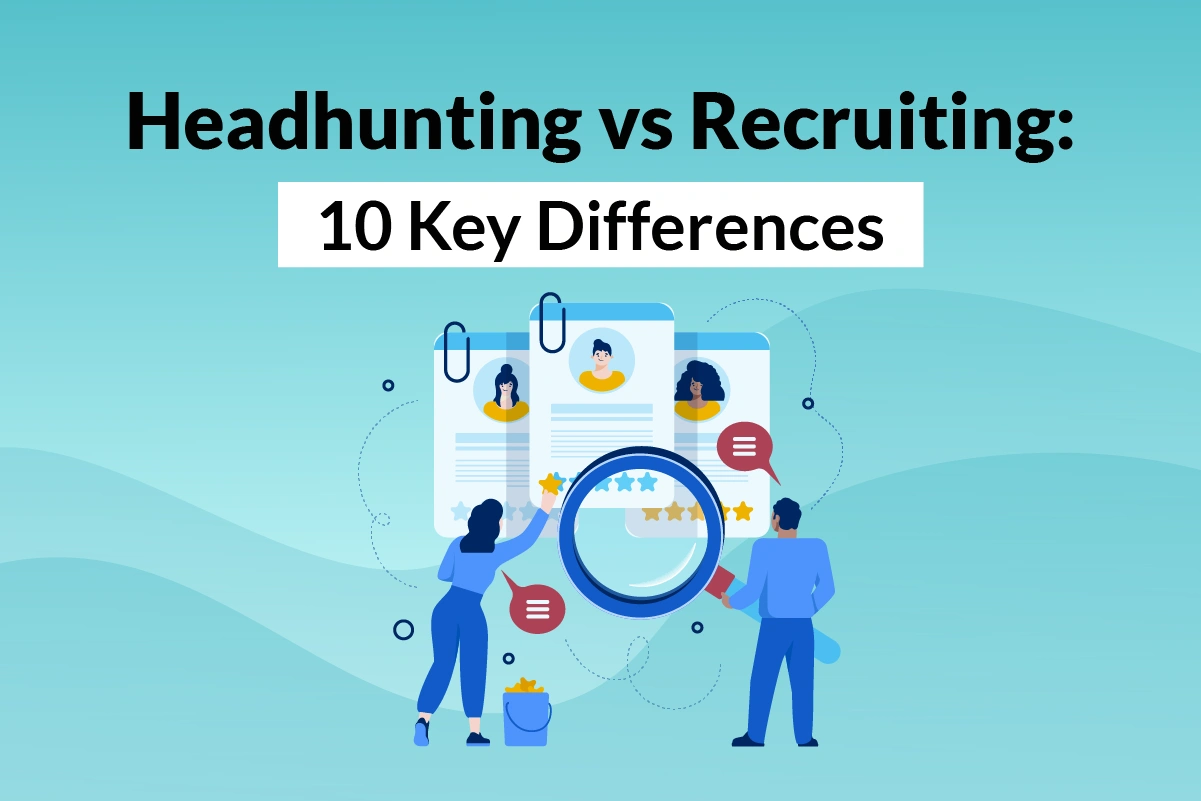In the dynamic world of talent acquisition, understanding the difference between headhunting and recruiting is vital. While headhunting vs recruiting is often used interchangeably, these roles have distinct strategies and purposes. As more businesses lean into creating inclusive workplaces, especially catering to the needs of building diverse workforces, it becomes crucial to recognize which approach aligns with organizational goals. Let’s delve deeper into these differences to develop your hiring strategy.
- Foster an inclusive and welcoming workplace culture
- Provide equal opportunities for growth and advancement
- Offer competitive compensation and benefits
- Support work-life balance
- Create affinity groups and employee resource networks
- Encourage diversity at all organizational levels
- Address any instances of discrimination or harassment promptly and effectively
- Engage in community outreach and social responsibility.
- Regularly survey and solicit feedback from diverse employees
- Unraveling the Dynamics of Headhunting vs Recruiting
Foster an inclusive and welcoming workplace culture
Understanding the nuanced difference between a headhunter and a recruiter can dramatically influence your approach to cultivating an inclusive workplace culture.
While headhunters pinpoint specific talent for senior roles to align with the company’s ethos, recruiters ensure that all organizational levels resonate with the company’s values, promoting inclusivity. Together, their harmonized efforts create a workplace where each individual feels empowered, creating an environment of mutual respect and growth. The synergy of both roles ensures a holistic approach to creating an environment where everyone feels at home.
Provide equal opportunities for growth and advancement
The battle of “recruiter vs headhunter” often comes down to the approach toward professional advancement.
Recruiters aim to fill vacancies and may emphasize company-wide training programs. In contrast, headhunters, familiar with their candidate’s trajectory, can negotiate roles, ensuring avenues for growth. HR professionals must discern which method aligns with their vision, especially when targeting inclusive growth for all employees.
Offer competitive compensation and benefits
When evaluating the difference between headhunter and recruiter in compensation negotiations, distinct practices emerge. Recruiters often stick to organizational scales, ensuring fair pay. Having in-depth insights into their candidate’s worth, headhunters can ensure better-tailored packages, including benefits crucial for workforce members. This tailored approach ensures that organizations truly get what they pay for—unmatched talent.

Support work-life balance
In today’s dynamic workplace, work-life balance is no longer a luxury that is hard to get—it’s essential. While recruiters may highlight organizational policies, headhunters, with their deeper candidate relationships, emphasize individualized solutions, whether it’s flexible hours or remote work. A well-rounded hiring strategy incorporating both views ensures genuine support for all employees.
Create affinity groups and employee resource networks
In the field of employee support, the contrast between “recruiter vs headhunter” is evident.
A recruiter typically connects with a vast number of potential candidates with their approach. Their method is comprehensive and ensures a broader diversity in the talent pool. When aiming to establish employee affinity groups based on race, gender, ethnicity, or other identities, recruiters can help instate foundational groups within organizations, ensuring that all gender employees, minority ethnic groups, and other underrepresented sectors find a space of belonging from day one.
On the other hand, a headhunter operates with in-depth precision, targeting candidates who bring a unique blend of skills and experiences. Given their niche-focused approach, headhunters can be pivotal in encouraging participation in events and initiatives. They are adept at pinpointing leaders within niche communities, potential champions of inclusivity, and those who could spearhead diversity initiatives.
Encourage diversity at all organizational levels
Diversity isn’t just about entry-level hires. It fills every level of an organization. Here, recruiters typically focus on broad-scale talent acquisition, sowing the seeds of diversity in foundational roles. At the same time, headhunters are paramount in seeking diverse leadership, ensuring that underrepresented groups have voices in decision-making arenas. The symbiotic relationship between these two ensures an entity’s top-to-bottom, all-encompassing diversity.
Address any instances of discrimination or harassment promptly and effectively
Both recruiters and headhunters are responsible for ensuring that their placements don’t face discrimination or harassment. While recruiters need to be proactive in setting expectations about the workplace culture, headhunters must ensure the leaders they place act as stewards of an inclusive environment. For every HR professional, understanding the recruiter vs headhunter dynamic in this context becomes essential in upholding the values of respect and equity.
Engage in community outreach and social responsibility.
Community engagement goes beyond mere talent acquisition. Recruiters can collaborate with community groups, laying the groundwork for long-term relationships and fostering flexibility. Headhunters, by virtue of their specific talent connections, can pinpoint community leaders and influencers, amplifying the organization’s voice in events and initiatives. When integrated into community strategies, both roles can bolster an organization’s stand on social responsibility.
Regularly survey and solicit feedback from diverse employees
Continuous improvement is a keystone of an inclusive workplace.
Recruiters offer a panoramic view, leveraging feedback from a vast array of placed candidates, which aids in shaping broader HR strategies.
Headhunters, in their niche, can provide in-depth insights from specialized talent, ensuring that every employee’s specific concerns and needs are highlighted.
Together, they provide a 360-degree view, instrumental for HR managers and executives aiming for continuous improvement.

Unraveling the Dynamics of Headhunting vs Recruiting
Drawing the line between headhunting and recruiting practices is essential for modern businesses.
The distinction between a headhunter and a recruiter does not lie in the name but in the approach alongside the depth of the search.
Truly understanding this forms the power to shape your organization’s future, particularly in an era emphasizing inclusivity, flexibility, and employee well-being. Comprehending these differences is crucial for businesses, HR experts, and visionaries committed to prioritizing fostering a diverse talent environment.
At Boulo Solutions, we pride ourselves in helping businesses craft a solid talent pipeline filled with exceptional professionals who possess top-tier skills and deeply resonate with a company’s culture and vision.
Let’s set the stage for your next success story. Post A Job with us today and embark on a transformative journey in redefining your organizational success.

